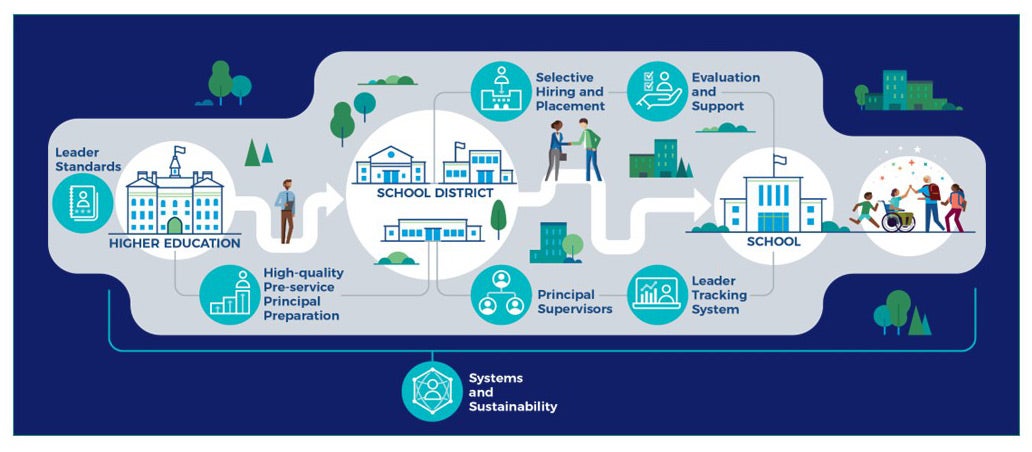Principals matter. While this is not new information, a growing body of research in recent decades has helped us understand precisely how and how much a good principal can make a difference in students’ lives. School districts that want to develop a large corps of effective school leaders might consider building a principal pipeline.
The work should be organized around a combination of seven domains that can help school districts build and sustain a comprehensive principal pipeline. The seven domains are connected to and reinforced by one another. They help districts and districts’ partners, such as states and universities, organize and prioritize leader development work.
- Leader standards: Establishing clear expectations for principals' knowledge, skills, and practices.
- High-quality pre-service principal preparation: Developing programming internally or with university partners to ensure training and certification programs are aligned with district priorities and leader standards.
- Selective hiring and placement of principals: Revising hiring and placement processes to be systematic and tied to leader standards. Use data-driven processes to recruit and place principals who are well-suited to the specific needs of the school and district.
- On-the-job evaluation and support: Aligning evaluation with leader standards and providing ongoing coaching, mentoring, and actionable feedback for improvement.
- Principal Supervisors: Providing leadership and guidance for principals from experienced school leaders.
- Leader Tracking Systems: Developing data management systems to streamline and leverage employee information to identify and support future leaders.
- Systems and Sustainability: Creating a position or office specifically dedicated to leadership development and pipeline support.

To learn more about building and implementing a comprehensive, aligned principal pipeline, check out resources in Wallace’s Principal Pipeline Toolkit.



